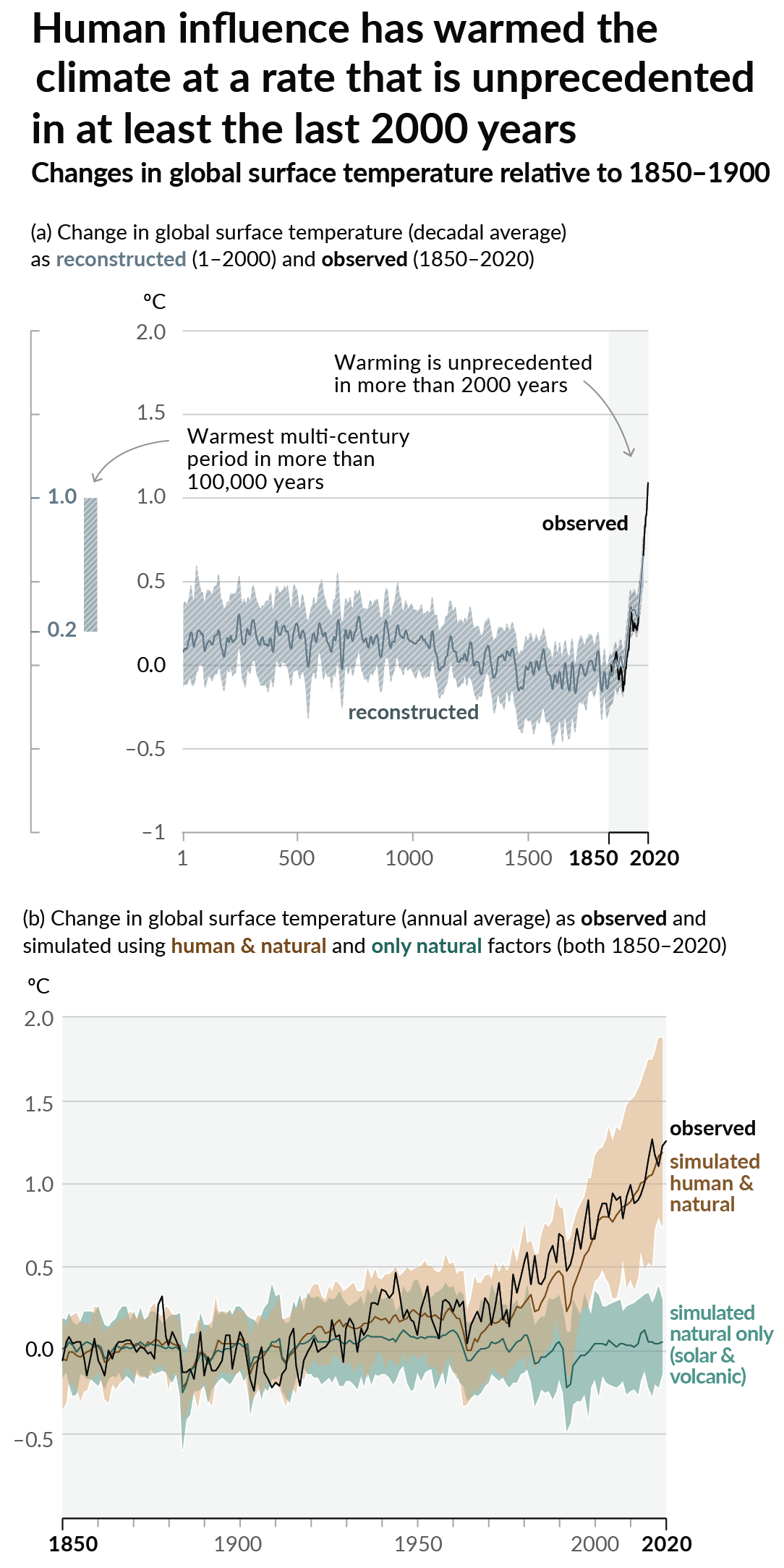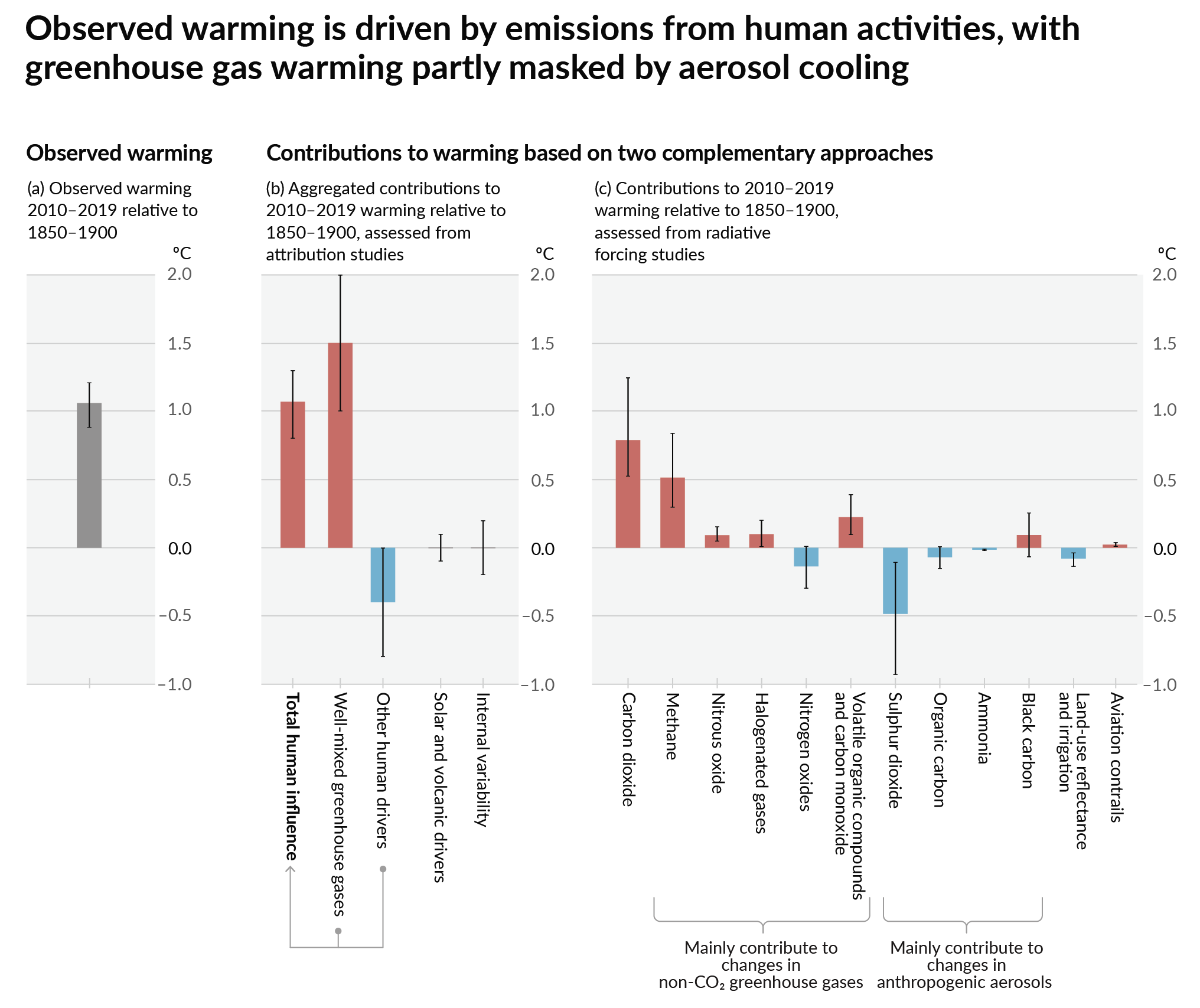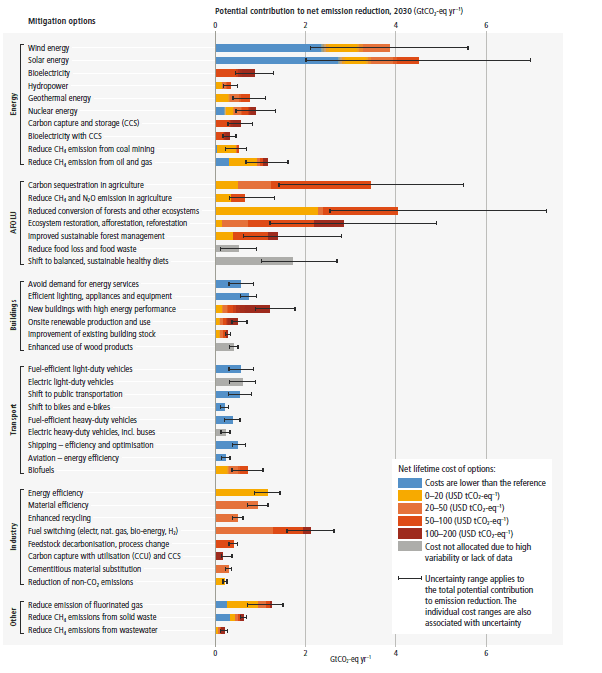The part of the article pointing out speed limits alone aren't good enough is important. Lots of people in my city ignore posted limits if they feel they're too low. There can be great side effects with physical changes as well. E.g., narrowing the street can give more space on the sidewalk for pedestrian traffic, or even add a sidewalk where none exists yet.
Climate - truthful information about climate, related activism and politics.
Discussion of climate, how it is changing, activism around that, the politics, and the energy systems change we need in order to stabilize things.
As a starting point, the burning of fossil fuels, and to a lesser extent deforestation and release of methane are responsible for the warming in recent decades:

How much each change to the atmosphere has warmed the world:

Recommended actions to cut greenhouse gas emissions in the near future:

Anti-science, inactivism, and unsupported conspiracy theories are not ok here.
Slower speeds mean more cars on the road for longer. Can't see how that's a win. I lose more time to commuting and more traffic longer burning fuel and wasting money. Just pedestrianize areas and get better Transit options
Mostly because it lowers the risk of being a pedestrian or cyclist, so people are more willing to be one.
That only works if you build it. It's insane to have cars and pedestrians share the same zone. No need in having cars anywhere near pedestrian areas. Move them to a car park. Build over / under around.
Have transit options
Lower capacity as in less space to fill with cars ? So you just have all the available space at all times occupied?.
Slower speeds mean more cars on the road for longer. Can’t see how that’s a win.
Slower speeds (lower V~f~) mean lower total capacity (Q), which means fewer cars on the road for longer.
In urban areas, speed limits make very little difference to journey times because you spend so much of your journey either stationary at junctions or accelerating or decelerating out of and in to junctions. If you were to track how much time you spend actually doing ~30mph in a journey through a 30mph zone, you'd find it's very little of it!
Fair enough. Bit again. Get a bus then or tram train whatever.
I'more talking about out of the cities. Out of urban areas
In well designed urban areas, where lights are synchronized I would expect a change in speed limit without changes in traffic light logic to increase time spent waiting at lights.
This has a knock on effect in heavy traffic areas as a car in front stopping might take 10 seconds to take off when the signal changes, but each car behind them has the cumulative delay of each driver in front, so a 10 seconds delay for the first car would likely be closer to a full minute for the fifth car.
I'm not sure that this extra time spent idling would be enough to undo the reduction in emissions due to lowering speed limits (more likely for EVs I imagine), but if implemented sloppily (as has been the case every time I've ever seen a speed limit on a road reduced), it does add significant time to commutes during busy times and should actually be thought through properly, with other changes to optimize traffic because of it, fully considered.
A far more effective and cheaper way of reducing emissions is invest in reliable and affordable public transit options, or better yet safe cycle paths.
I wish in concert with messing with traffic, we also did more to subsidize car alternatives, aside from biking and walking that the vast majority aren't doing over distance/in the weather.
It would also help to quit massively subsidizing driving (both by failing to charge appropriate taxes and fees for automobile registration and use while funding road construction almost entirely from general funds, and by using the zoning code to force property owners to oversupply free parking).
Fun fact: if cyclists were taxed for their "fair share" of the road use, they'd be due a refund.
I get where you are coming from, but the percentage of people that are going to bike to work is already very small, if you add things like rain/snow/heat that number I'm guessing drops to basically zero. We need alternative transportation for those that cannot bike/walk to work everyday.
Nah, that's a myth. Places like the Netherlands prove that if you build the infrastructure, people will ride, even despite their shitty weather.
So I did some crude Googling and it looked like most of the Netherlands averaged 7-12 inches of snow each winter, where in WNY we can get more than that in a single storm. Covered bike tunnels all over a city might get you to and from someplace in the snow, but you can't make them door-to-door for everyone. And some people are just not going to be fit enough, or healthy enough, or just want to lug a bike through a 2 foot snow bank to get to a bike tunnel to ride to work and then park their bike in a snow bank and hope they can get it back out 8+hrs later.
Okay, now do some crude Googling about how much snow Oulo, Finland gets.
Looks like the highest monthly average is January with just over 8 inches. How does this change anything I said?
Edit Contrast this with Buffalo, NY that has a seasonal average of 104 inches over the last 10 years.
Edit #2 Just read this piece from a couple years ago. My main take away is that it is still a small percentage of bikers overall still, but they are working on it (which is good!). It also specifically states that the city was designed around biking being a bigger priority than cars, which is how all the debating in this post started. I think we all agree this is what is needed before we are going to push any majority away from cars, as without the infrastructure and making it a viable alternative we are never going to get there in the US at least.
What do you think the initial capital cost of a semi sheltered bike path is compared to a road? What about operational expenses between the two?
The reality is we could very easily have sheltered bike paths and would likely save substantial money compared to maintaining and salting roads all the time.
You're right that we need more than just lower speed limits, and the article acknowledges that.
That said, lower speed limits are a good place to start. They make roads safer and also make them feel safer, which encourages more walking and cycling. With more walking and cycling, you have more people using the associated infrastructure and it's then easier to advocate for more of it.
I couldn't disagree more. A better place to start would be outlawing yank tanks and vehicles that immediately kill pedestrians and cyclists even at low speeds. Reducing the speed limit from 50 hm/h to 40km/h literally does nothing for cyclist safety if they are hit by an SUV, nor does it address that larger vehicles have inadequate visibility and reducing speed limits without changing road design will likely increase distracted driving.
Removing vehicle capacity without providing a viable alternative will not reduce number of vehicles committing but will increase unpredictable behavior, the best option is to provide an alternative to driving first, once that is established, you can add disincentives for driving.
I think we broadly agree here! I think lower speed limits are an incentive to walk or cycle. Collisions at lower speeds are significantly less dangerous, and roads with lower speed limits feel a lot safer, too.
Lower speed limits are also not really a disincentive to drive, because they don't make journey times much slower. And, of course, they make things safer for motorists, too.
I totally agree that you need to introduce whole packages of measures. Speed limits are an important measure, but not the only one, and not the most important.
Yeah we absolutely agree talking big picture! I meant I couldn't disagree more with the place to start haha.
I think I read it here that this is tied to municipalism, the idea of solving climate problems at the council level where individuals habe some hope of fixing their lived environments.